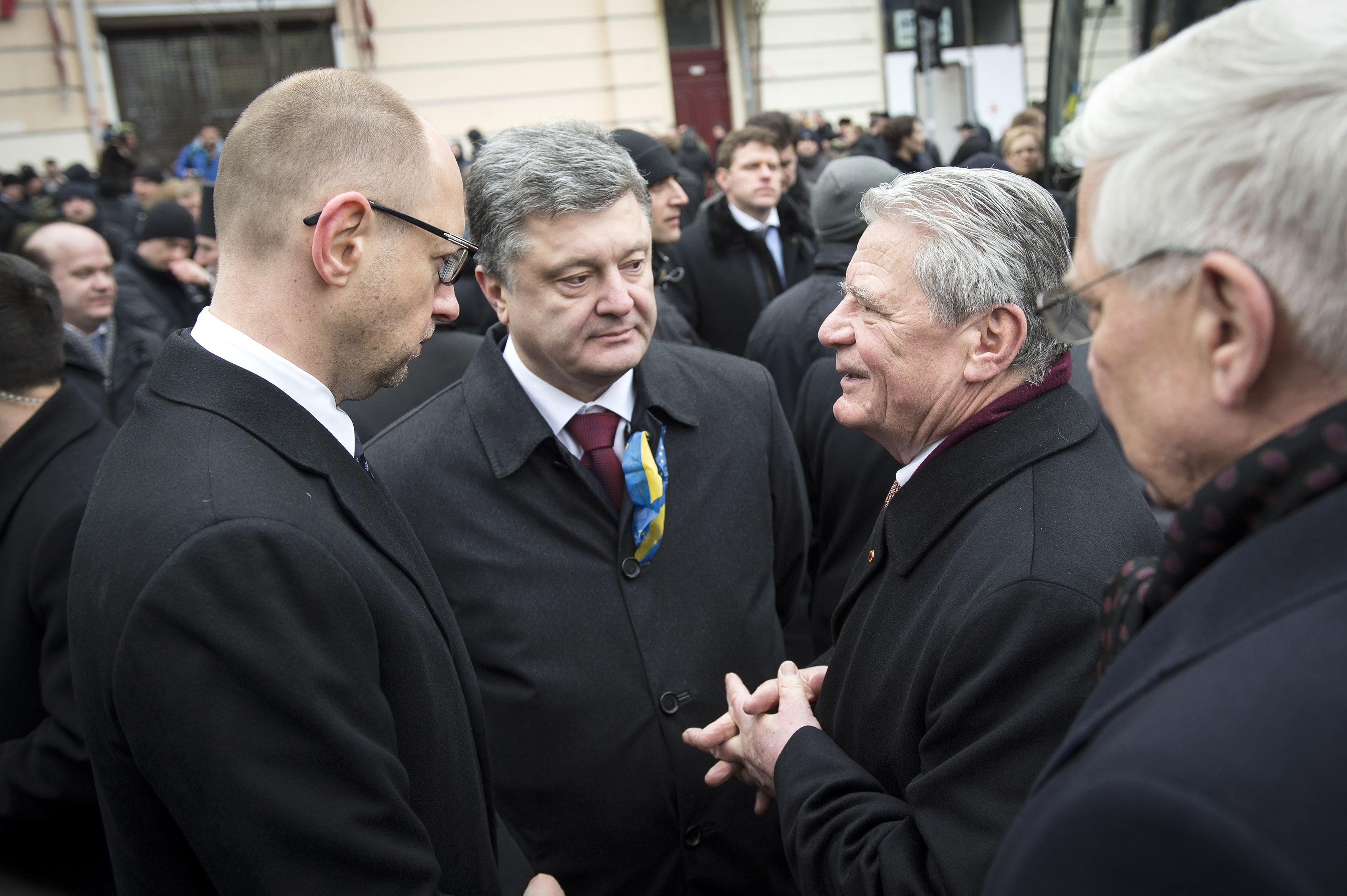In mid-January, Russian president Vladimir Putin sent a letter to his Ukrainian counterpart Mr Petro Poroshenko suggesting a plan for the withdrawal of heavy armaments from the line of contact between Ukrainian and so-called separatist forces in the Donbas region, as well as other key issues of the Minsk agreement concluded in September 2014. Consequently, a series of shuttle diplomacy contacts and meetings were initiated by German chancellor Mrs Angela Merkel and French president of France Mr François Hollande that culminated in a new agreement („implementation measures“), let’s call it Minsk II, in the early morning of the 12th of February.
In parallel with the political process launched by Mr Putin’s letter, the so-called separatists began a major offensive all along the line of contact in the Donbas, having been significantly bolstered by Russian heavy equipment and manpower. This was a classic move by the Kremlin: escalate the fighting on the ground and, while cynically and continuously denying any responsibility and involvement in the conflict, call for peace negotiations. The Kremlin is surely not interested in offering Ukraine a chance to take a deep breath and consolidate its defence and internal political stability. So what was Mr Putin’s real purpose and what did he achieve?
First, Mr Poroshenko announced the mobilization of up to a hundred thousand volunteers in the coming months and urged the West to supply Ukraine with modern defensive weapons. The delivery of arms to Ukraine by the US lacked only President Obama’s signature. Yet such steps, as seen in late January, could not guarantee Ukraine’s success against massive Russian military involvement in the conflict and would only become effective by late spring, at best. Nevertheless, Mr Putin seemingly decided—despite military advances by the so-called separatists—that it was the right time to stop, at least for some time, a process that would further cement Western support for Ukraine. The supply of Western weapons to Ukraine is now virtually off the table, while Mr Putin tirelessly mocks the Ukrainian armed forces („beaten“ by „former tractor drivers“).
On the other hand, while actually escalating the conflict, Mr Putin cunningly brushed off the table additional Western sanctions that threatened to aggravate yet further the impact on Russia’s vulnerable and shrinking economy. And last but not least, Mr Putin presented himself—including to his domestic audience—as the indispensable and true peacemaker around whom the whole Donbas conflict resolution process revolves. In addition, the Kremlin did not forget to immediately emphasize, that it has absolutely nothing to do with the implementation of the Minsk II agreement or with the conflict on the ground.
What are the likely consequences of Minsk II for Ukraine and Mr Poroshenko? Looking at the text of the agreement, the price to be paid for the ceasefire is enormous. Kyiv has to implement very painful constitutional and legal reforms and organize local elections in full agreement with “local leaders” whom it still considers – for good reasons – to be terrorists. In fact, Russia is creating a new Transnistria within the occupied areas of neighbouring Ukraine, even if Mr Putin – as usual – claims the opposite. And who is going to pay the bill for the reconstruction of destroyed industry, infrastructure, and homes in those regions that will almost certainly remain in Russia’s firm grip? It will surely not be Moscow, who doesn’t have sufficient financial resources even for Crimea. . Most probably German and other European taxpayers will have to take on this burden.
In conclusion, Minsk II is clearly a temporary political manoeuvre of Mr Putin to achieve the medium-term goals that I mentioned above. The mere fact that so-called separatists totally disregard the “immediate and strict” ceasefire without any condemnation from Moscow shows that Mr Putin is not serious about Minsk II. And why should he be? Mr Putin didn’t even bother to replace “local leaders” (Zakharchenko and Plotnitsky) after the 12th of February, to make at least a cosmetic change and encourage negotiations and reconciliation. Besides, Russia’s end goals go far beyond the provisions of Minsk II. Mr Putin will use all opportunities to boycott the agreement and blame Ukraine for breaking it. Therefore, it would be perfectly logical to expect in a few months from now a new “set of implementation measures” (a Minsk III) to be proposed by Moscow, to even more erode Ukraine politically, economically and militarily, and to consolidate and legitimize the criminal puppet regimes in Donetsk and Luhansk. Mr Putin seems to have enough patience and determination to engage on a long path of subduing Ukraine, whatever it takes. He will try to make Western support for Ukraine to be as painful and drawn-out as possible. Will the West have enough patience and interest in Ukraine to see it?


